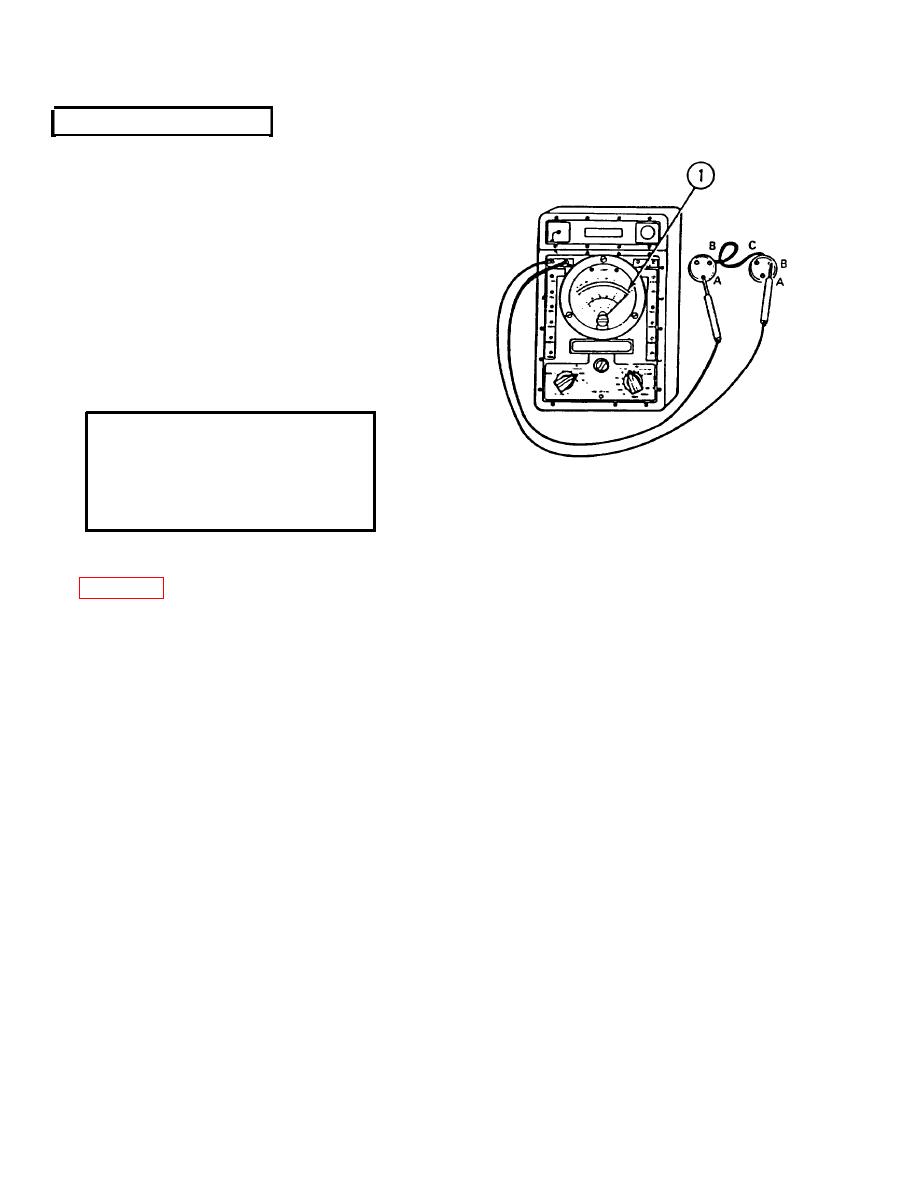 |
|||
|
|
|||
|
|
|||
| ||||||||||
|
|
 TM 5-2420-224-20-1
A short (or short circuit) occurs when two
circuits that should not be connected have come in
contact with each other. A short also occurs when
a circuit that should not touch ground has made
contact with ground. Follow the instructions below
to check for shorts in a circuit.
NOTE
T h e TS-352 B/U multimeter is
s h o w n in these instructions, but
the procedures are similar for any
of the multimeters.
1.
Set and zero rnultimeter for OHMS RX100.
CAUTION
The multimeter can be
damaged unless power is
TYPICAL TEST
r e m o v e d from the circuit being
FOR SHORTS
tested.
2.
Disconnect circuit being tested from its power
source. To be safe, check for voltage first
3.
Connect one multimeter probe to one circuit
and the other probe to the other circuit, or
ground (if checking for a short to ground). The
example shows a check to see if wire A is
shorted to wire B in a wiring harness.
4.
Watch the multimeter needle (1) for the
following indications:
If needle moves (even a little), circuits
are shorted.
If needle does not move, set selector
to X10K. If needle still does not move,
circuits are not shorted.
If needle jumps or flickers, circuits are
intermittently shorted. Bending or flexing
a wiring harness, while checking for
shorts, will often identify and locate
intermittent shorts.
3-6
|
|
Privacy Statement - Press Release - Copyright Information. - Contact Us |